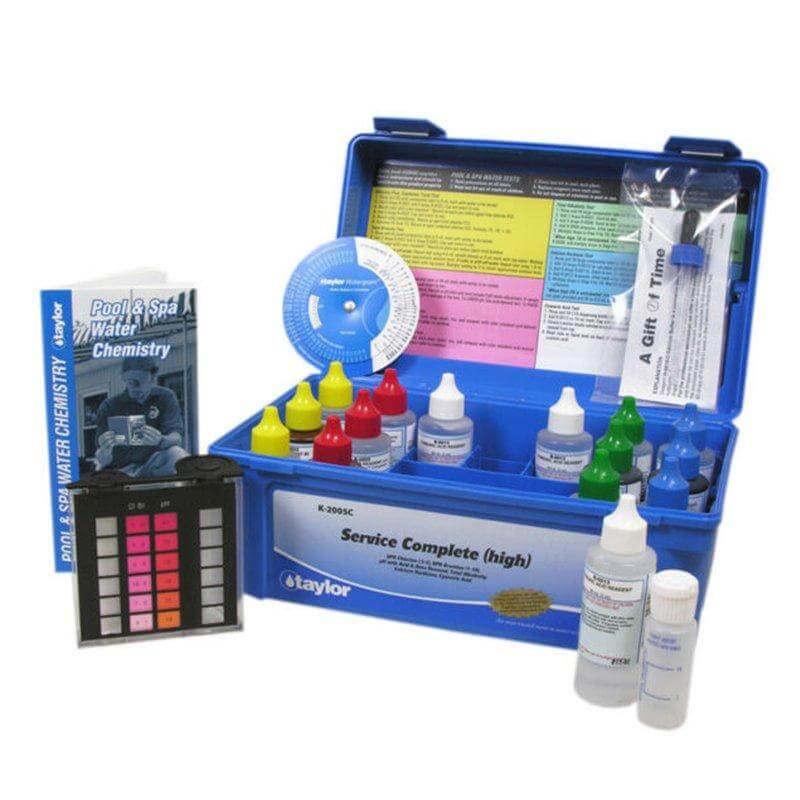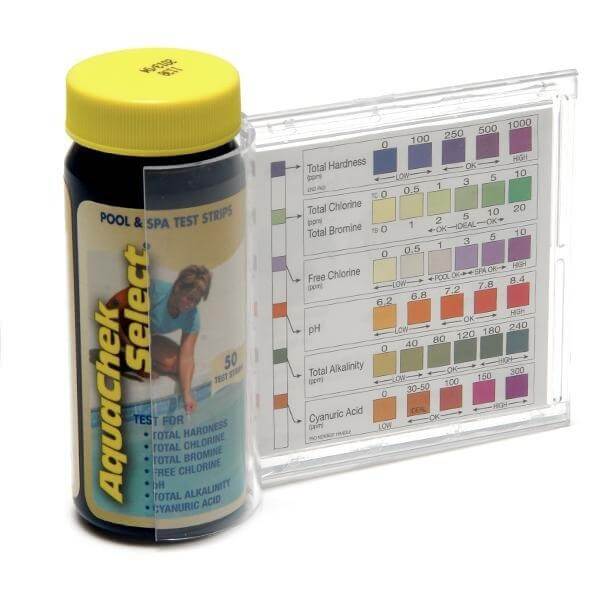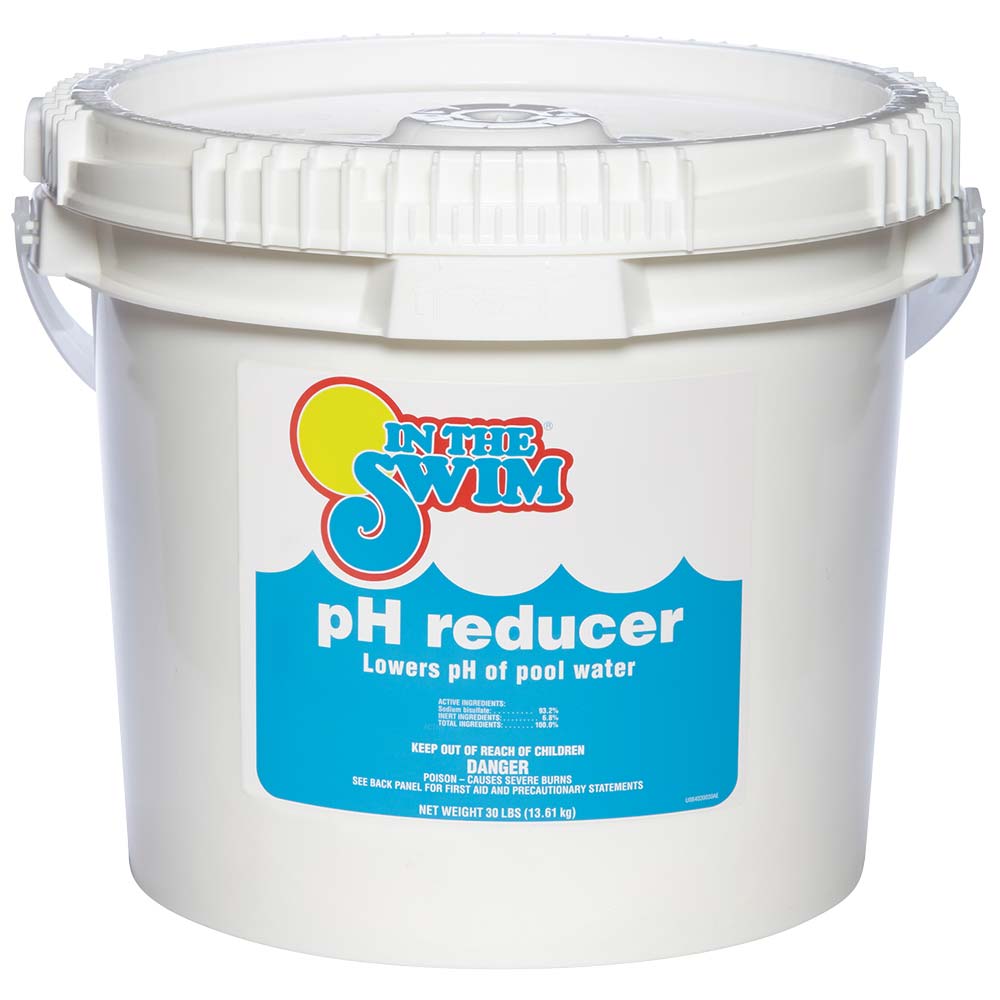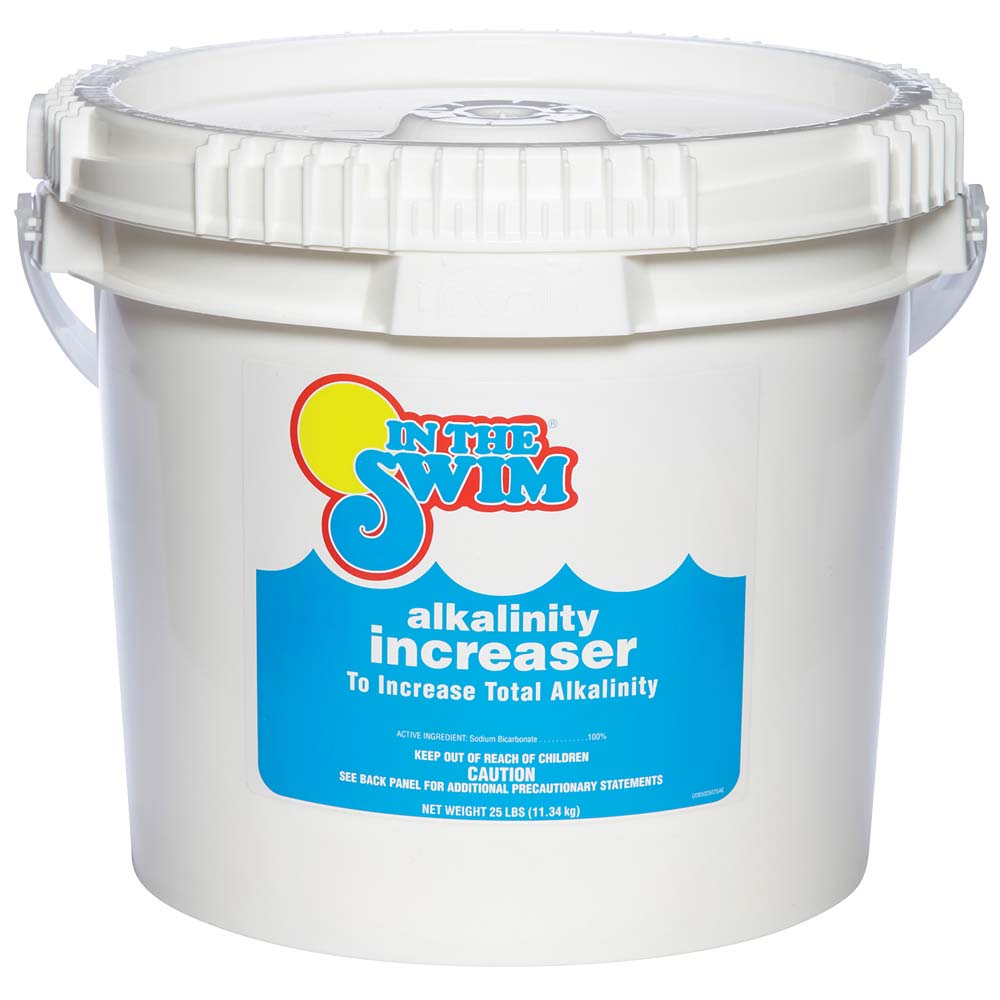FREE Standard Shipping On All Orders $100 or More!*

What Chemicals Are Needed for an Intex Pool?
Every summer, tens of thousands of Intex pools are set up and filled, with dreams of long afternoons spent splashing and relaxing in a private backyard pool. And then it hits you: "How do I keep the water clean and clear? What chemicals do I need for my Intex pool?"
Not to worry! You've come to the right place. Whether you have a small Easy Set pool or a big Ultra Frame pool, keep reading to learn how to balance, sanitize, and disinfect your Intex pool water.
Intex Pool Water Balance
Let's start with the basics. Pool water balance refers to the levels of pH, Total Alkalinity, and Calcium Hardness. Balanced water is less likely to become cloudy or green. This important part of water maintenance also protects your vinyl Intex pool, and is more comfortable for swimmers. Before getting started, test the water with an at-home test kit or test strips (more on that below).
pH
Remember that pH is the key to a healthy pool. When pH rises above 7.8, your chlorine becomes less effective, and the potential for stains and scale formation increases. Likewise, a pH under 7.2 is considered acidic, and may cause skin and eye irritation as well as corrode pool equipment. Unbalanced pH is hard on vinyl Intex pools, and this damage is not covered under warranty. Use pH Reducer to lower pH levels or pH Increaser to raise levels into the ideal range of 7.4-7.6.
Total Alkalinity
Total Alkalinity (TA) affects pH and is best in the range of 80-120 ppm (parts per million). When TA is too low, pH becomes erratic and unstable, and when too high, the pH is difficult to adjust. When your TA is not in range, adjust this first before addressing pH. Use pH Reducer if TA is over 120 ppm. If TA is under 80 ppm, the product you use depends on pH levels. When both TA and pH are very low (TA less than 80 ppm, pH below 6.8), make sure your pool water is free of metals, then add pH Increaser. If only TA is low, use Alkalinity Increaser to bring the levels up.
Calcium Hardness
Calcium Hardness is the measure of how hard or soft the pool water is, and has an ideal range of 200-400 ppm. Hardness levels tend to fluctuate more slowly than pH or Chlorine levels, so you won't need to address it as often. Soft water (below 150 ppm) tends to become cloudy or foamy easily, so raise the levels with Calcium Hardness Increaser. High Calcium Hardness levels above 600 ppm may cause scale buildup, especially if your pH is unbalanced. You can help keep that excess calcium in check with a scale prevention product. Or, if draining the pool is a feasible option, you can always start over with fresh water in your Intex pool if the Calcium Hardness gets above 800 ppm.
Intex Pool Sanitizers
Once the pool is open, it is extremely important to maintain a constant and consistent level of chlorine in the water. Check the levels at least 2-3 times a week with test strips or a test kit. Free Available Chlorine (FAC) should be no lower than 1.0 ppm at the absolute minimum. For the greatest protection against algae, bacteria, and cloudy water, Intex pools should maintain a chlorine level of 2.0-4.0 ppm at all times.
If you opted for the Intex Salt Chlorinator, you can make your own chlorine by adding the correct amount of pool salt to the water. Otherwise, most Intex pools use 3" chlorine tablets in a floating chlorinator. Use 1-3 tablets at a time, depending on your pool size. You'll need enough to establish and maintain proper chlorine levels. Small Intex pools under 12' in diameter should use 2-4 of the 1" tablets in a chlorine floater.
In addition to everyday chlorination of your Intex pool, you may have heard of shocking the pool. This refers to raising the chlorine level above 10 ppm by adding a granular chlorine powder, also known as pool shock. When Total Available Chlorine (TAC) levels are 0.3 ppm or more above your Free Available Chlorine (FAC) level, it's time to shock the pool. Most pools need to be shocked at least once per week to remove Combined Chlorine (chloramines) and maintain proper sanitizer levels in the water. Always read and follow label instructions when shocking the pool.
Other Intex Pool Chemicals
Maintaining a good pH level and consistent chlorine reading is good enough for some pools. But with a small pool filter and high pool use, your water may need additional help.
Algaecides are used to prevent algae growth in a pool. Added weekly, the liquid works to dissolve algae's outer protective layers so that chlorine can penetrate and kill it.
Clarifiers help small pool filters trap tiny particles. They coagulate fine contaminants into larger clumps that are more easily trapped by your Intex pool filter. If you're struggling with cloudy pool water issues and the water is properly balanced, try using a clarifier to turn the water crystal clear again.
Enzymes work wonders for dissolving oily bather waste and other non-living organic contaminants. These contaminants are often the culprits for cloudy water, and they can gum up small cartridge filters. Enzymes break them down and help your sanitizer work more efficiently.
Intex Pool Water Testing

Test Kits

Test Reagents

Test Strips
Testing the pool water is the only way to know if your water balance and sanitizers are at the right levels. I would recommend daily testing at first, until you come to understand how your pH and chlorine levels fluctuate, then you can reduce testing to 2-3x per week.
I took a look at Intex pool purchases over the past 5 years, to find out the most popular water testing kits for Intex pools, shown below, all under $20.
Intex Pool Filtration
A word on Intex pool filters would be appropriate. Filtration and circulation directly affect water balance and sanitation, with all components working together for clean and clear water. The standard Intex filters that come with the pool are often marginal in size and performance, and may need to run 18-24 hours per day to keep water clean.
When Intex pools turn cloudy or green, first check the chemistry and chlorine levels, but then also increase your daily filtration. This is the only way to correct and prevent poor water quality.
Many Intex pool owners struggle with maintaining their filter the first year, and seek to upgrade their filter. It's so common we wrote an entire post about it: Intex Pool Filter Pump Upgrades.
Final Tips
As you may have already guessed, chemicals needed for an Intex pool are the same for any other pool type. You'll just need less due to a smaller pool size. On that note, it's important to know your pool size in gallons. Pool chemical labels often instruct you to add "X" amount per 10,000 gallons. Intex pools are often much less than 10,000 gallons, so you may have to do a little math! No matter what type of chemical you're adding, remember to ALWAYS read and follow label instructions.
That's all there is to it! Remember to keep your skimmer and pump baskets free of debris, and clean the pool filter regularly. Use a leaf rake and/or a small pool vacuum to remove large debris from the pool as needed. Now get out there and enjoy summer with your new Intex pool!







